We have an abundance of babies now during the December month.
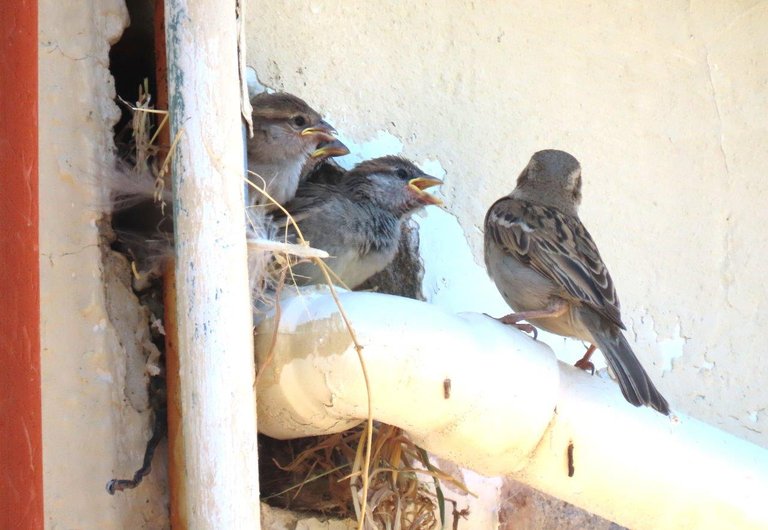
First, we had the twin Malachite sunbird babies that I posted, and here now we have Cape Sparrow triplets.
They built that nest high up on the pipes running down on the wall of an old double story house.
The Cape sparrow (Passer melanurus), or mossie, is a bird of the sparrow family Passeridae found in southern Africa. A medium-sized sparrow at 14–16 centimetres (5.5–6.3 in), it has distinctive plumage, including large pale head stripes in both sexes. Its plumage is mostly grey, brown, and chestnut, and the male has some bold black and white markings on its head and neck. The species inhabits semi-arid savannah, cultivated areas, and towns, and ranges from the central coast of Angola to eastern South Africa and Eswatini. Three subspecies are distinguished in different parts of its range.
The mom had food in her crop, and here she was regurgitating it to feed the baby.
Happy days, as you can see how hungry the babies are. There were three of them, but I'm sure that once the mom leaves, they pull back into the nest, and change positions so that all three can be fed in rotation.
There's the dad, singing to the world a song about his pride and virility.
The Cape sparrow was featured on the lowest-denomination South African coin, from the farthing (¼-cent) in 1923 to the cent that ceased to be minted in 2002, with designs based on an original by George Kruger Gray. This was said to be because women interned at a concentration camp in Bethulie during the Boer War adopted a biblical quotation (from Matthew 10) as their motto: "Are not two sparrows sold for a farthing? and one of them shall not fall on the ground without your Father." It has also been featured on stamps from Lesotho and the Central African Republic.
That poor mom kept on flying back and forth to feed the three youngsters.
Wally, she shouted, will you get off your high perch and come and help me to feed.
Look where Wally was sitting, and he whispered to his wife that he was keeping a guard on the nest. I think Wally is a real dodger, as that poor mother flew around countless times to get food for the babies.
You will find some interesting reading in the Source that I mentioned above, about these Olde World birds. There are so many here, that people don't take notice of them anymore, except the wine farmers of course. Once they had eaten all of the grass weeds below the grape lines, then they will start to eat the grapes. Their local nickname is Mossie, and there are different species of them here in South Africa.
Such is a sparrow's life.
I hope you enjoyed the pictures and the story.
Photos by Zac Smith. All-Rights-Reserved.
Camera: Canon PowershotSX70HS Bridge camera.
Thank you kindly for supporting this post.
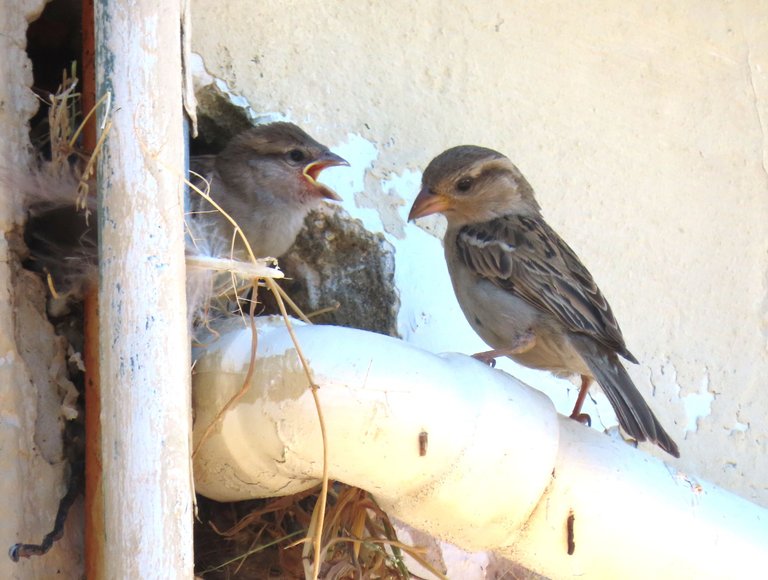
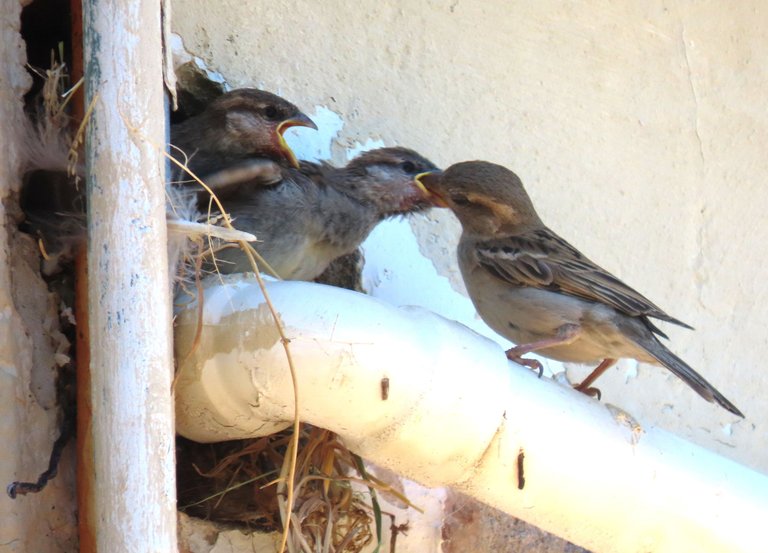
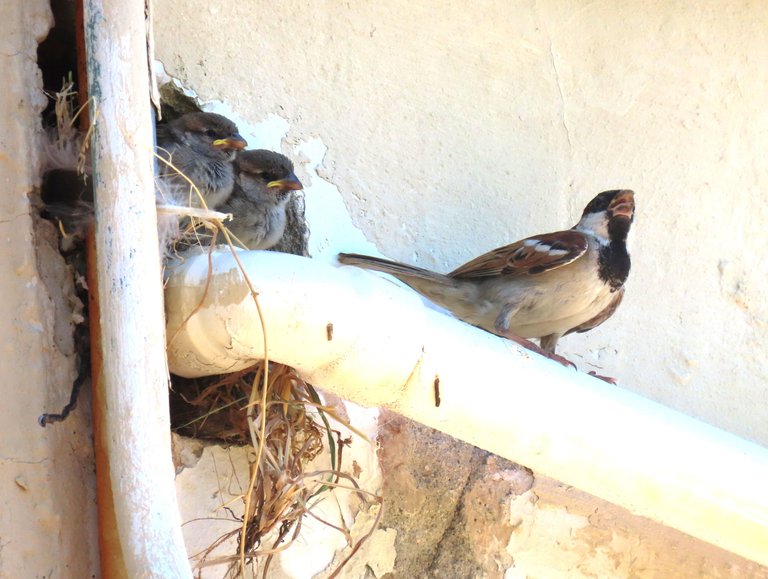
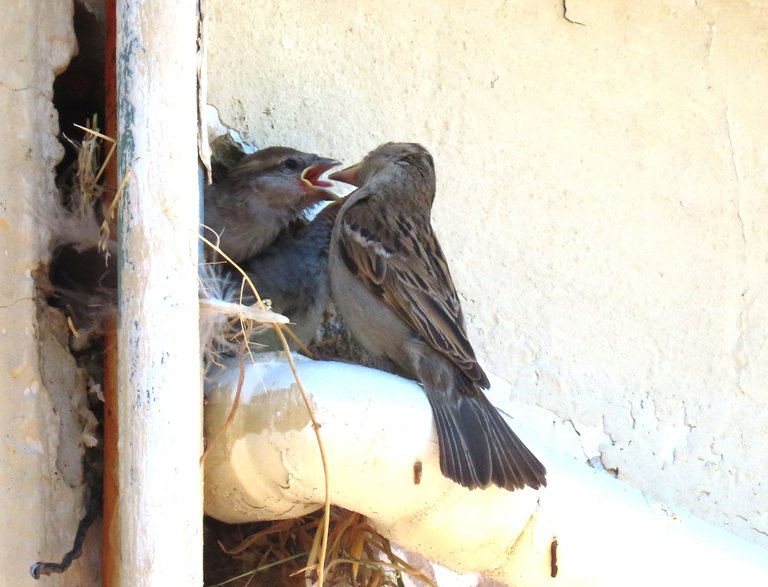
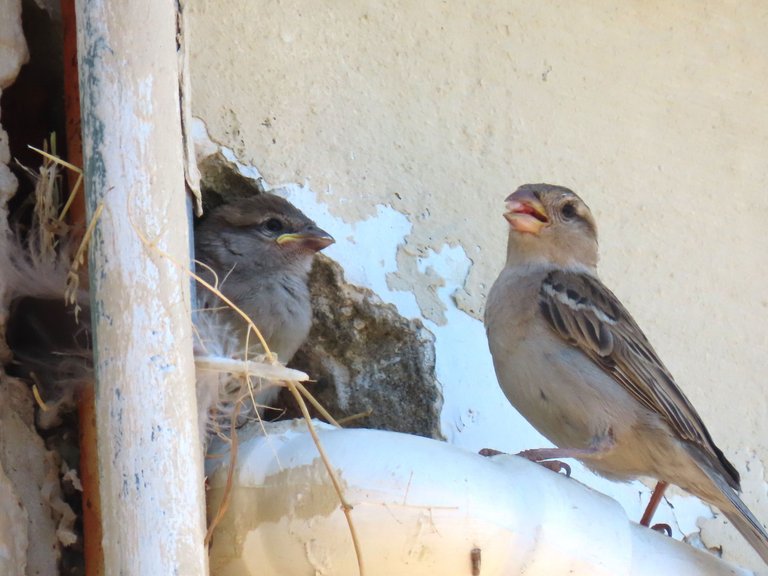
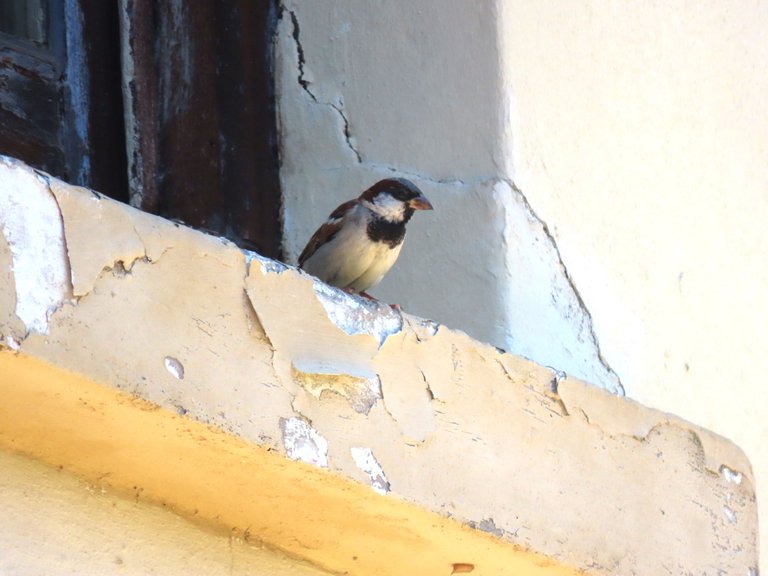




 )
)